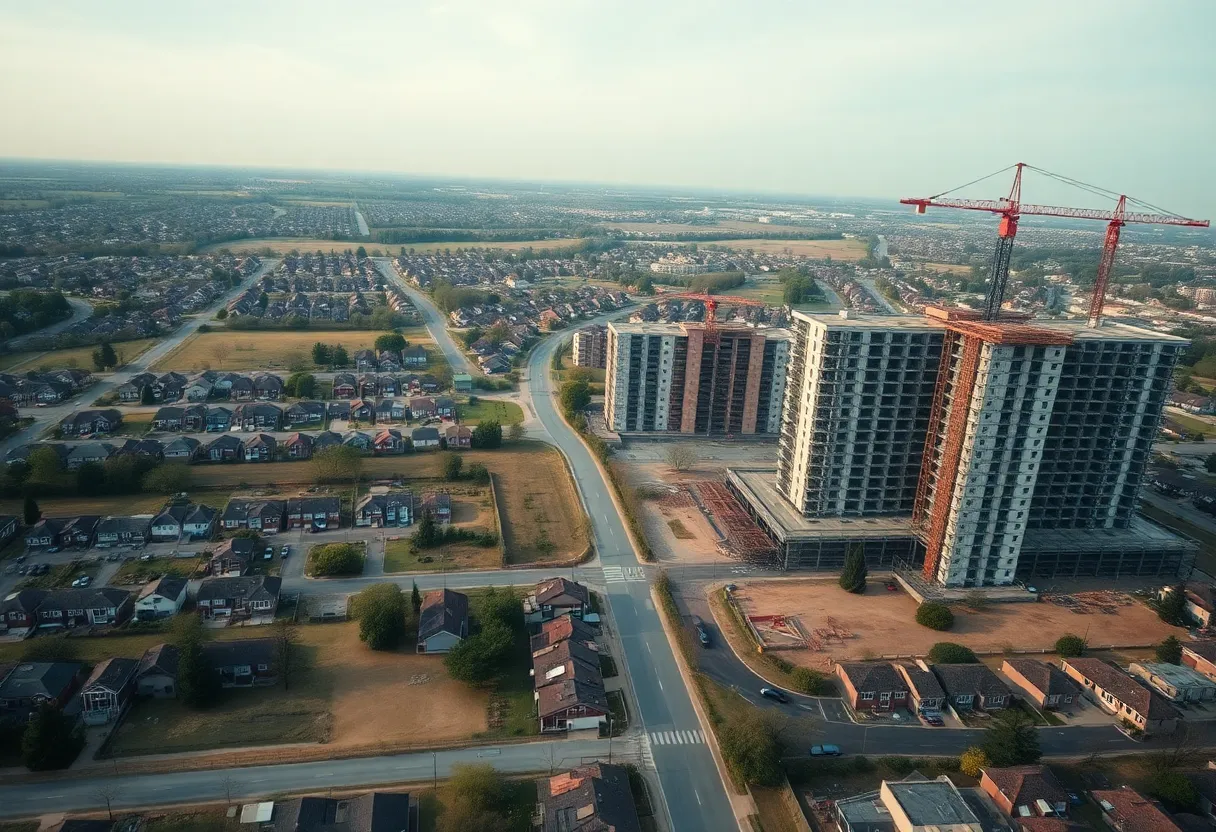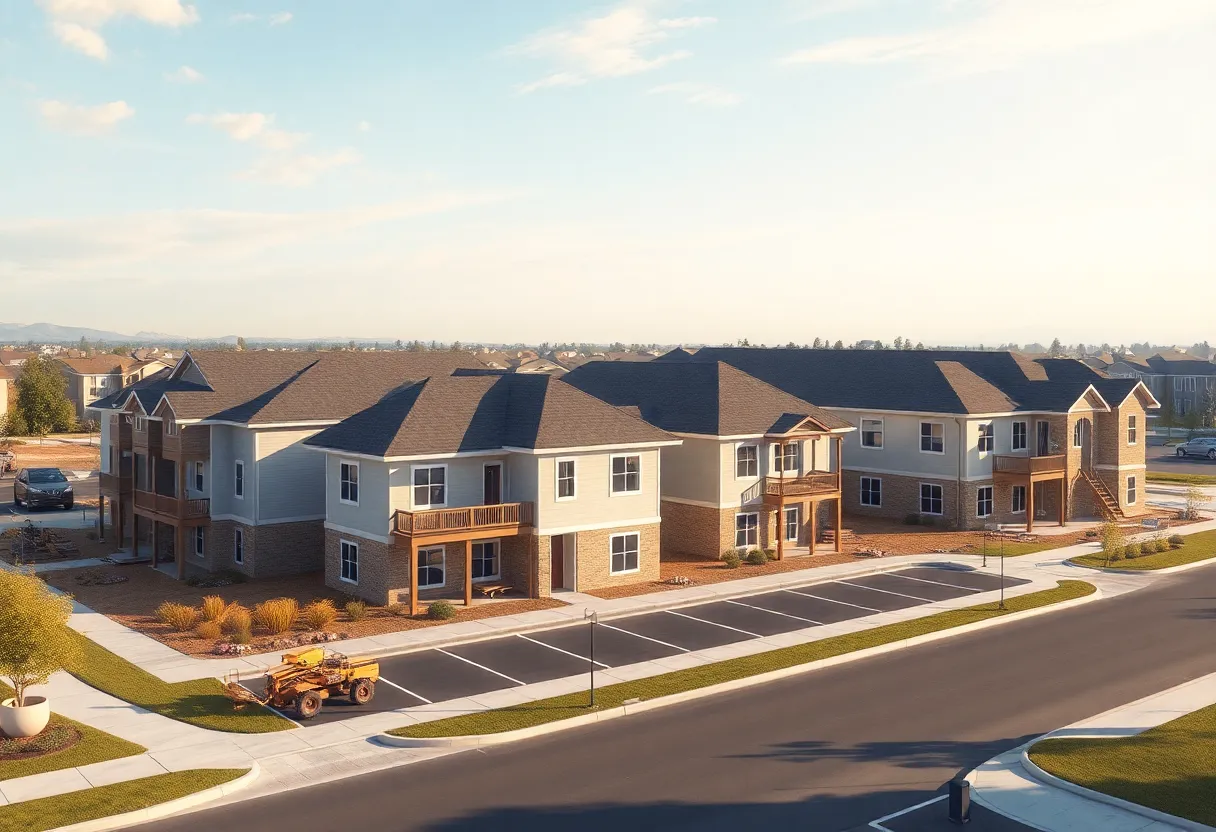United States, August 26, 2025
News Summary
The United States faces an estimated shortfall of about 4.7 million housing units, driven by restrictive zoning and compounded by financing, labor and materials constraints. While upzoning can lower regulatory costs and enable denser development, experts warn it won’t automatically trigger large-scale building without cheaper construction credit, more skilled workers, lower input prices, and productivity gains. Policy proposals include public financing, federal loan supports, tax incentives, workforce training, tariff adjustments, and income supports for low-income renters. A coordinated mix of supply- and demand-side measures is needed to meaningfully close the gap.
U.S. Housing Shortage Tied to Zoning, Finance, Labor and Materials — Fixes Must Go Beyond Land‑Use Reform
Key takeaway
The United States faces a deep and growing housing shortfall that reaches into jobs, prices, and families’ futures. Recent estimates put the gap at about 4.7 million fewer housing units than households in need. The shortage has roots in several areas at once: restrictive land use and zoning, tighter and costlier construction finance, a long slump in construction labor, and rising material costs. Experts say that changing zoning rules alone will help but cannot solve the problem by itself.
What’s happening now
Housing production has slowed over the past two decades. Although housing starts rebounded in mid‑2025 to an annualized rate of 1,428,000 units in July 2025, and starts rose month to month and year to year, other signs remain weak. Building permits fell in July 2025, and a widely watched builder sentiment index stayed deep in negative territory with a reading of 32 in August 2025, marking many months of pessimism. Builders are using more sales incentives and cutting prices in response to weak buyer traffic and high mortgage costs.
Multiple causes stacked together
The shortage is not the product of a single mistake. Four main constraints are recurring across regions:
- Land‑use and zoning rules — Rules that limit density and favor single‑family lots are widespread. Roughly three quarters of residential land is effectively off‑limits to apartment buildings in many places, and parking mandates or minimum lot rules often make multi‑family projects costly or impossible.
- Construction finance — Lending for building became harder and more conservative after the late‑2000s crash. The dollar value of residential construction loans fell sharply in the years after 2008 and remained much lower through mid‑2024, complicating builders’ access to credit.
- Labor shortages — The construction workforce contracted by nearly one million jobs in the wake of the Great Recession. Many workers never returned, and recruiting younger people into trades has been difficult. Lower immigration of skilled trades has also tightened the market.
- Material costs and supply — Lumber, metals, and other inputs rose in price as mills closed or capacity shrank after the recession. Tariffs on some imports raised costs further and made materials more expensive for builders.
Where regulation fits in the story
Advocates who push for more housing supply argue that land‑use rules are a leading cause of scarcity. They point to studies that find a large share of development cost can come from regulation, with one report estimating that nearly 40.6 percent of multi‑family development costs are attributable to regulatory requirements. Reforms known as upzoning — changing local rules to allow more apartments or smaller lots — have been adopted in several states and localities with the goal of increasing supply where demand is strongest.
Critics counter that making density legal is not the same as making building profitable. Development remains a risky, concentrated investment. If adding many units would push rents down below the level developers need to earn a return, construction would slow. Supporters reply that loosening rules lowers the minimum feasible price for a project and therefore improves the chance that projects can pencil out.
Why construction never returned to the old peak
Starts plunged after the 2006–2008 housing collapse for reasons tied to the subprime crisis and the recession. But production did not fully rebound in the long recovery that followed. Part of the reason is that finance stayed tighter and more costly for construction lending; between the crash and mid‑2024 the stock of residential construction loans fell dramatically. Regulatory burdens and higher compliance costs rose in many places, and labor and materials constraints became persistent headwinds.
Policy ideas that go beyond zoning
Experts propose a multi‑pronged approach:
- Direct public financing — Local governments can offer low‑cost loans or partner on projects, then reinvest returns to seed future development. Some counties have used favorable municipal financing to spur multi‑family projects.
- Federal loan programs — New long‑term, fixed‑rate loan options for multi‑family construction could stabilize starts during downturns.
- Tax incentives — Accelerated depreciation and other tax tools can steer private capital toward rental housing by lowering after‑tax costs.
- Labor and training — Policies to attract immigrants with trade skills and greater investment in vocational programs could ease workforce bottlenecks.
- Material cost relief — Reducing or suspending tariffs on key inputs and supporting domestic capacity can blunt price swings for lumber and metals.
- Productivity gains — Updating codes to allow modular and factory‑built methods could raise output per worker and lower costs.
- Targeted affordability support — More housing alone will not make shelter affordable for the poorest households; cash transfers, rental subsidies, or social housing remain necessary complements.
Short‑ and long‑term outlook
In the short run, mixed signals leave the market uncertain: a recent uptick in starts may be fragile because permits fell and builder sentiment stayed weak. Mortgage rates and Treasury yields remain influential, and central bank policy will affect future demand. Over the long run, success depends on using zoning reform as part of a broader package of finance, tax, labor, and industrial policies so supply can actually rise where demand is strongest and remain affordable to a broad range of households.
What to watch next
- Monthly housing starts and building permits
- Builder sentiment indexes and use of sales incentives
- Construction loan volumes and lending terms
- Labor market data for construction trades
- Policy moves on zoning, municipal financing, tariffs, and tax incentives
Frequently Asked Questions
How big is the U.S. housing shortfall?
Current estimates put the shortage at around 4.7 million housing units compared with the number of households. This shortfall varies by region and is largest in areas with strong job growth.
Are zoning rules the main cause?
Zoning and land‑use rules are a major factor, especially where they limit density and require large single‑family lots or parking. However, they operate alongside financing limits, labor shortages, and high material costs. Tackling zoning alone is unlikely to be sufficient.
Why didn’t housing bounce back after the 2008 crash?
The crash shut down lending and led to job losses. After the recession, construction finance stayed tighter, compliance costs rose in many areas, and the construction workforce and supply chains did not fully recover. Those factors kept production below earlier peaks.
What policy tools could speed building?
Options include zoning reform, municipal and federal financing programs, tax incentives like accelerated depreciation, immigration and training for trades, tariff relief on key inputs, and boosting factory‑built housing to raise productivity.
Will building more housing make housing affordable for everyone?
Increasing supply can lower prices where demand is tight, but it will not ensure affordability for the lowest‑income households. Direct affordability tools such as rental aid, cash support, or social housing remain necessary for those populations.
Key features at a glance
| Feature | Current state | Policy levers |
|---|---|---|
| Supply gap | About 4.7 million fewer units than households | Zoning reform, public finance, tax incentives |
| Construction finance | Loans and lending terms tighter since 2008; construction loan volumes down sharply | Municipal lending, federal loan programs, credit support |
| Labor | Nearly 1 million construction jobs lost after the Great Recession; slow recovery | Immigration for trades, vocational training, workforce programs |
| Materials | Prices up and capacity strained; tariffs added costs | Tariff relief, domestic capacity investment, supply chain support |
| Market signals | Starts rebounded in July 2025; permits fell; builder sentiment weak (HMI 32) | Monitor starts, permits, sentiment, interest rates |
Bottom line: Fixing housing scarcity requires a package of zoning change plus finance, tax, labor, and industrial policies. Land‑use reform is a key piece, but it is not the whole solution.
Deeper Dive: News & Info About This Topic
Additional Resources
- Vox
- Wikipedia: Housing in the United States
- Chicago Tribune (via TheDailyNewsOnline) editorial
- Google Search: United States housing crisis Congress editorial
- Reuters: New U.S. home sales fall
- Google Scholar: US home sales borrowing costs housing demand
- NBC News: Why the housing market is so expensive
- Encyclopedia Britannica: United States housing market
- The New York Times: Real-estate games
- Google News: US housing market





